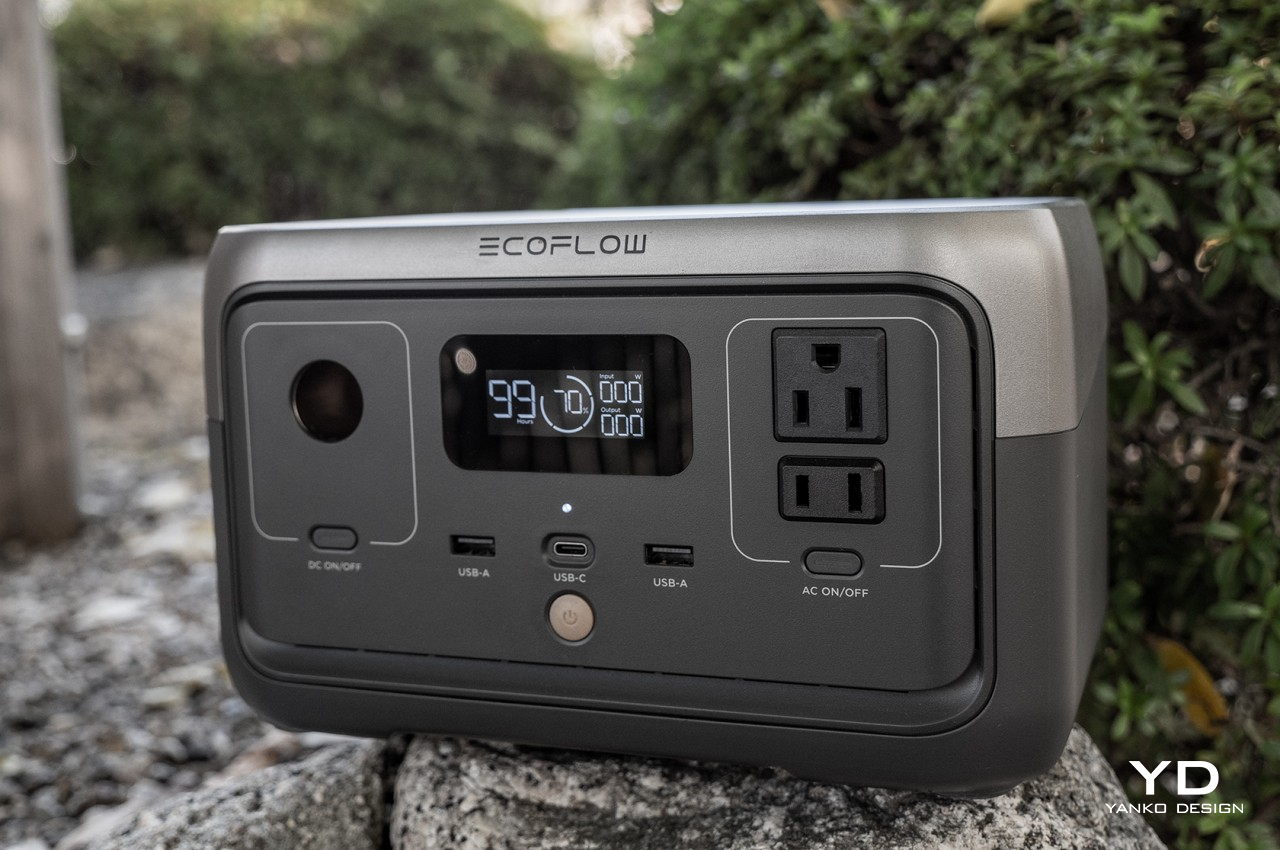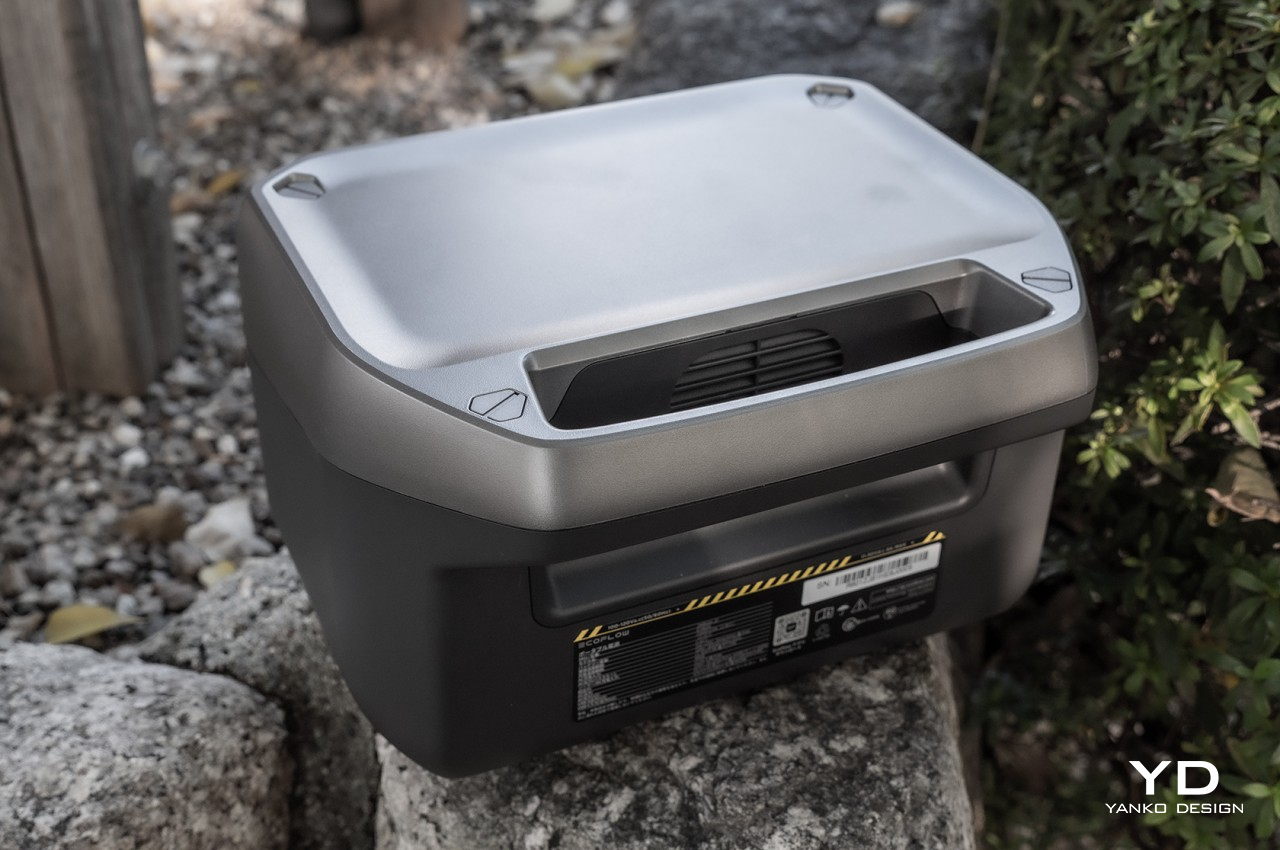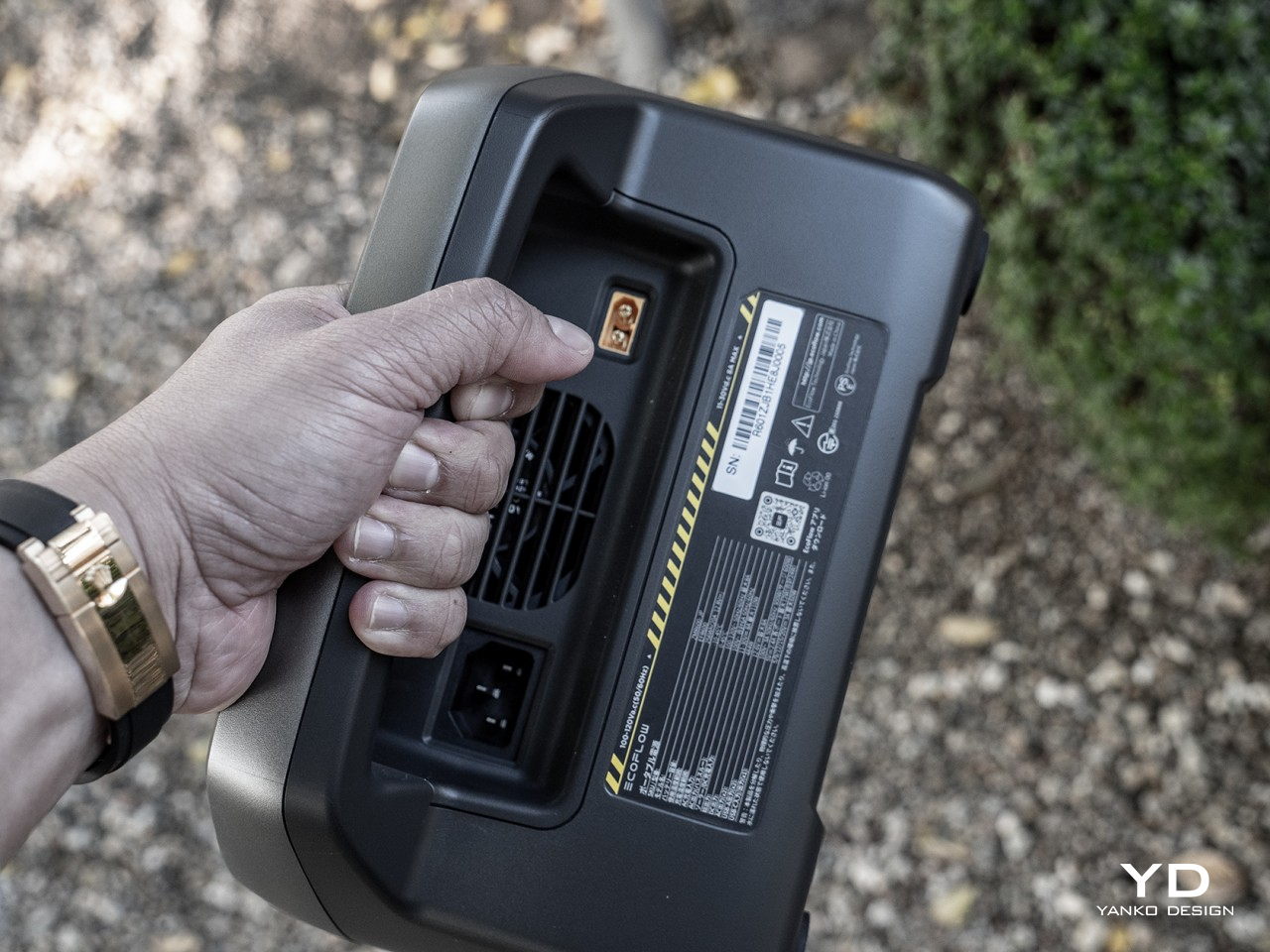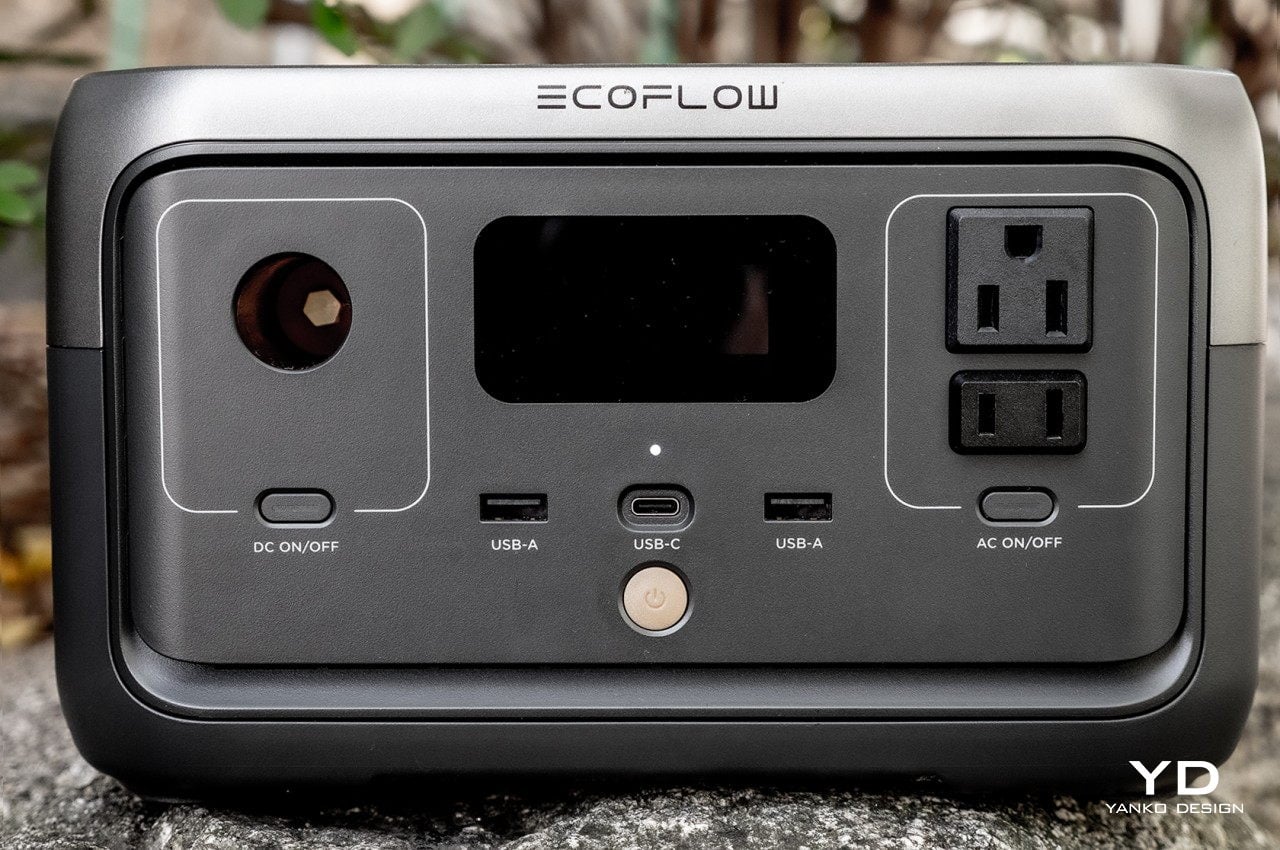
PROS:
- Very light and portable
- Fast AC charging
- Remote phone control
- USB-C port can be used for input
CONS:
- Handle position makes carrying a bit awkward
- No wireless charging despite new design
- USB-C output capped at 60W
We have become so dependent on our electronic devices that many of us get anxiety attacks when their batteries go red and we’re nowhere near a wall socket. There are plenty of power banks available today, but they’re only capable of handling smartphones and a few low-power laptops just two or three times at best. For anything else, you might be more interested in the new portable power stations that can power even some appliances, including a whole house. That kind of power might be overkill for some, especially since they come in large and unwieldy bodies that cost as much as they weigh. For simpler cases, you might be better off with smaller, lighter, and more affordable options, so we take the new EcoFlow River 2 for a run to see if it can meet those demands.
Aesthetics
As with any second-generation product, the EcoFlow River 2 has been able to learn from the lessons of its predecessors. Given the gap between the first and second EcoFlow Rivers, there has definitely been plenty of lessons to serve as the foundations of a better product. Fortunately, EcoFlow did seem to have benefited from hindsight, allowing it to turn the River 2 into a sleeker and more compact power station that no longer looks like a car battery.
The biggest change you will notice comparing the two generations is that the River 2 has a more refined appearance thanks to its dual-tone color scheme and flat top. The large carrying handle no longer arcs over the top but instead juts out from the back. That makes it easier to stash the power station away in cramped spaces and put things on top of it. Having the handle extend to one side only also reduces the space it needs to occupy. This helps give the box a cleaner look, but relocating the carrying handle does have its share of consequences as well.

The EcoFlow River 2 also looks tidier because of how the ports and vents are all arranged. Granted, there are now fewer of them compared to the first River power station, but the needs of devices and their charging methods have also become simpler since then. All the output ports are now in the front, while the charging ports are all on the back. There is actually nothing at the sides or on the top to mar those clean surfaces, giving the power station a more streamlined appearance. The black and silver color combination is also more in line with the rest of EcoFlow’s power stations, giving the brand a more coherent and consistent visual identity.
Despite the reduction of ports, the River 2 portable power station still offers a standard set of features for both AC-powered appliances and gadgets that charge over DC. There are still standard ports for different charging methods, including solar power. You still have an LCD screen to monitor the battery’s status, though it’s now a monochrome display, perhaps to save on power consumption. The one thing that has disappeared, though, is the LED flashlight which is honestly pointless at this size and intensity. A phone’s torch function or a proper flashlight will be more useful.
Ergonomics
After having reviewed some heavy-duty power stations that can power a house or even charge an electric car, it’s quite refreshing to finally have one that is accurately portable and that won’t break your back or your bank account, for that matter. At 7.7lbs, there’s definitely still quite a bit of heft, but considering what it’s capable of doing, that’s not asking too much. Of course, it will have some limitations considering the battery capacity, but it is designed to be more agile and portable for people who need to get up and going quickly rather than for those who need an alternative to the power grid.
Carrying the EcoFlow River 2, however, might be difficult for some other purpose. With the carrying handle now at the back, the box’s center of gravity is changed when you lift it up. There will be an uneven distribution of weight, and it could make carrying River 2 more awkward and uncomfortable. The body of the power station will be extending sideways and could end up hitting your leg or other things along your way, depending on who you’re carrying it. The good news is that it’s less of a problem with the River 2’s smaller and lighter body than it is for its bigger siblings, the River 2 Max and River 2 Pro.

Since all the ports are now consolidated and limited to two sides only, it’s also easier to manage the cables that will be sticking out of the power station. Plugging in those cables is also easy because there are no flaps to cover the sockets. There are, however, switches for the AC and DC ports but none for the USB ports. These switches can be pressed manually or toggled via a mobile app. The AC and DC input for charging are located on the back right under the carrying handle. That might actually make it a little bit cumbersome to push cables in because your hand might hit the handle in the process.
One of the biggest ergonomic upgrades of the EcoFlow River 2 is that you don’t actually have to even touch it to control it. Now that it has support for connecting to a phone via Bluetooth or Wi-Fi, you can toggle switches and change settings conveniently with a few taps. The companion mobile app is quite easy to understand and use, and it gives you the right amount of information to keep tabs on how much power you’re taking in and pushing out. Of course, the built-in LCD screen can provide some of that as well, but it’s more convenient to do so from a larger display.
Performance
The EcoFlow River 2 carries a 256Wh battery of the LiFePO4 kind. This is, by now, the most common kind of battery used by portable power stations because of its safety, reliability, and longevity. It will take more than 3,000 charging cycles (zero to full) before it starts to lose its full capacity. That means this power station is here for the long haul, and you’re more likely to replace it with a new model sooner than for it to become unusable.
With that battery capacity, the River 2 can output 300W of power or 600W if you’re using EcoFlow’s X-Boost. In theory, that’s enough to support even water heaters or coffee makers, but that might be pushing your luck. The portable power station is admittedly on the small and low side, which limits what it can power. It can keep a refrigerator running for 3 hours, for example, but only the small, car-type ones that can be powered with 60W DC. The River 2’s AC two 110 AC outlets are better for powering small appliances or charging devices that can’t be charged over USB.

There is no wireless charging, despite the flat surface of the River 2’s top. It’s less of a critical flaw and more of a missed opportunity, especially with many devices supporting wireless charging these days. It would have definitely been a welcome convenience, especially when you imagine how you’d simply place your iPhone on top of the power station and then sit back and relax under the sun or the stars. Then again, that same iPhone can charge via USB anyway, or even with an AC charger if necessary.
As for those USB ports, the EcoFlow River 2 has two USB-A ports and a single USB-C port. The latter maxes out at 60W, which is fine for phones and tablets but is barely sufficient for more power-hungry laptops. What makes this port special is that, unlike other portable power stations, it functions both as output as well as input, meaning you can charge the power station itself via USB-C, provided you have one of the more powerful 60W or 100W power bricks. It’s not going to be fast, but it’s convenient when you don’t have the AC charging cord with you.
Charging is actually where this new portable power station shines. In addition to USB-C charging, which is still uncommon even for power stations of this size, the River 2 supports the usual charging options of AC, solar, and car charging. At the maximum 360W (with X-Stream) input, AC charging only takes up an hour to go from zero to full, just enough time for you to pack your things for an outdoor adventure. Going completely green with solar charging at 110W max does take longer at around 3 hours, but it might be your only option when you’re already camping under the wide skies. Unfortunately, you can’t combine charging methods, even AC and USB-C, but that might not make much sense for a battery of this size anyway.

Like many of EcoFlow’s power stations, the River 2 also has an EPS or Emergency Power Supply feature that can automatically switch from AC input to direct DC output in just 30ms. That’s fast enough to prevent a desktop computer from powering down or any connected appliance from being interrupted. The battery capacity makes it less viable as a complete power grid replacement, but that’s hardly the point of this power station anyway. The EcoFlow River 2 is designed to be agile and light on its feet, freeing you to move and go as you please without being weighed down, literally and figuratively.
Sustainability
Almost no power station at this point has made sustainability a core focus of their designs, and the River 2 is unfortunately similar. While these battery-powered boxes do offer a more sustainable alternative to fuel-chugging generators, their very nature isn’t as eco-friendly. There’s clearly a ton of plastic used, especially with their enclosures, regardless of the use of metal for the internal frame. We’re still hoping that these companies will soon pay particular attention to the materials and processes they use to make sustainability a major bullet point.
Unlike larger power stations that can be used to power a whole house, solar charging feels more like an extra perk than a selling point for the EcoFlow River 2. It’s something you’ll want to use for convenience when charging the battery outdoors rather than pulling from your car’s battery. Given its size and purpose, it might be more efficient to charge it from a wall socket at full blast, but it at least offers you the option to choose solar if you’re not in a rush.

Value
Not everyone needs a full-blown power generator the size of a suitcase, especially when traveling light. Some might only need what would be the equivalent of a dozen power banks that can power small AC appliances. It’s for these people that the EcoFlow River 2 shines the brightest, especially with its $229 price tag.
There are actually few power stations in the market that offer this kind of well-balanced quality in a small, compact package. Some are cheaper but also offer a lower battery capacity with fewer ports and a cumbersome design. Others have a bit more power but are also heavier and proportionally more expensive.
Verdict
Picking out a portable power station these days is almost like choosing a smartphone. Disregarding brand, the decision always involves making a series of compromises on features and price. For power stations, size and weight become critical factors, especially for people who find themselves spending brief periods outdoors more often than not. For these people, it isn’t just important to have power but to have that power available in a flash.

Having a lightweight body with a decent battery capacity already gives the EcoFlow River 2 an edge, but being able to charge itself in just an hour puts it at the top. Yes, we wished it had wireless charging and a 100W USB-C output, but these would be “nice to have” rather than critical needs. It won’t be powering your whole house in an emergency, but it will be able to provide critical power to the most important things in your life, regardless of the situation. When you need a solid and truly portable companion for your modern life on the go, it’s hard to go wrong with the EcoFlow River 2.
The post EcoFlow River 2 Portable Power Station Review: A Capable Outdoor Sidekick first appeared on Yanko Design.
from Yanko Design

0 Comments